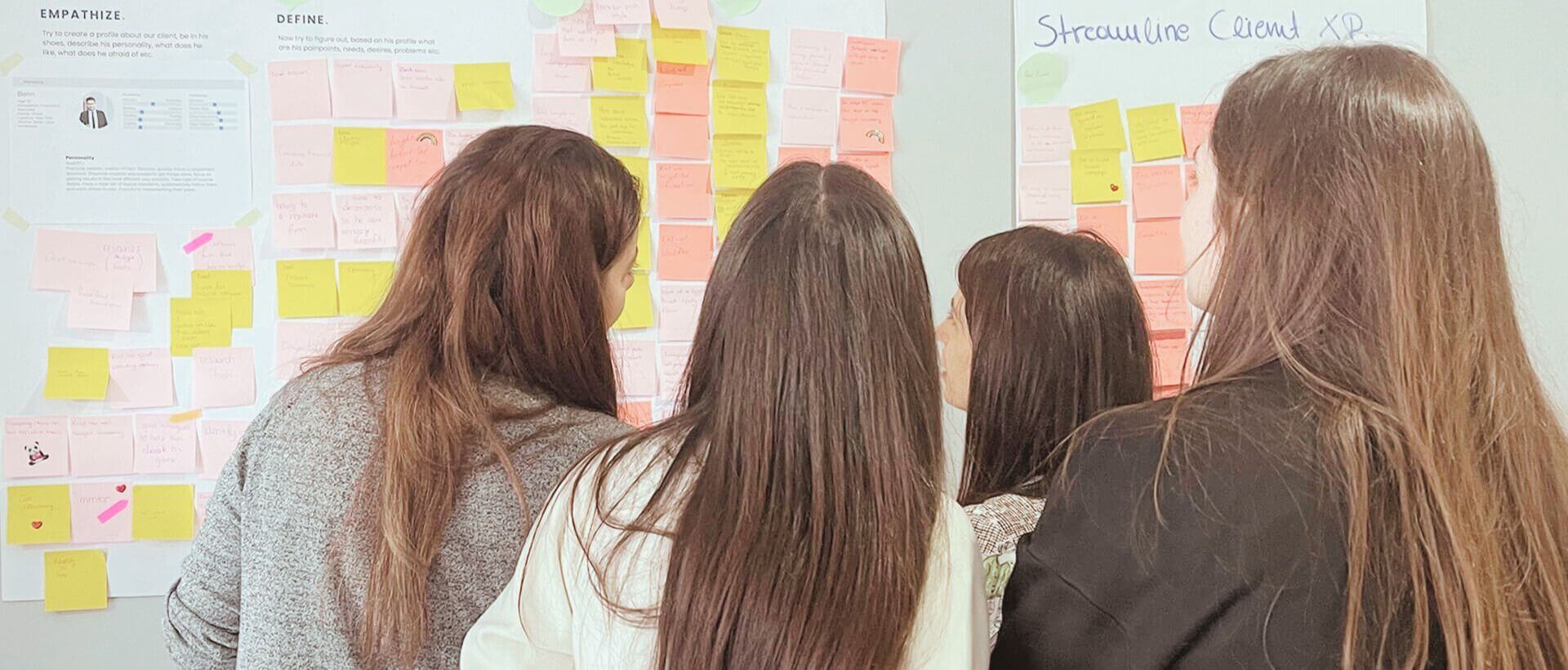Boosting Client Satisfaction with Design Thinking: A Guide for Every Department
In today’s competitive business world, understanding clients and creating meaningful experiences for them is crucial. One powerful approach to achieve this is design thinking. This method, rooted in empathy and creativity, helps various departments of a company see things from the client’s perspective and develop products or services that truly meet their needs. Let’s explore how design thinking can benefit different departments within a company.

What is Design Thinking?
Design thinking is a human-centered approach to problem-solving. It involves five key steps: empathize, define, ideate, prototype, and test. By focusing on understanding the user’s needs, generating creative ideas, and testing solutions, design thinking helps create products and services that people love.
Marketing: Crafting Compelling Messages
For the marketing department, design thinking starts with empathy. By deeply understanding the clients’ needs, desires, and pain points, marketers can craft messages that resonate. For example, instead of guessing what will appeal to the target audience, marketers can use design thinking to gather insights directly from clients. This leads to campaigns that speak directly to clients’ experiences, making them more effective and engaging.
Product Development: Building What Matters
Product development teams can benefit immensely from design thinking. By involving clients in the early stages of product design, teams can gather valuable feedback and insights. This ensures that the final product addresses real client problems. For instance, a tech company might prototype a new app feature and then test it with users. The feedback helps refine the feature, ensuring it meets users’ needs before a full-scale launch.
Customer Service: Enhancing Experiences
In customer service, design thinking helps create better client interactions. By empathizing with clients, service teams can understand common frustrations and areas for improvement. For example, if clients frequently complain about long wait times, a design thinking approach might involve brainstorming and testing new ways to streamline service processes. This could result in faster, more satisfying customer experiences.
Sales: Building Stronger Relationships
For the sales department, understanding the client’s journey is crucial. Design thinking encourages sales teams to step into the clients’ shoes, understanding their decision-making process. By doing this, salespeople can tailor their approach to match the client’s needs and preferences, leading to more meaningful interactions and stronger relationships. For instance, a salesperson might use insights gathered from client interviews to address specific concerns during a pitch, increasing the likelihood of a sale.
Human Resources: Creating a Better Workplace
Even the human resources (HR) department can use design thinking to improve employee satisfaction, which indirectly benefits clients. By understanding employees’ needs and challenges, HR can create better workplace policies and initiatives. Happy, motivated employees are more likely to provide excellent service to clients. For example, HR might use design thinking to develop a new onboarding process that makes new hires feel welcomed and supported from day one.
Finance: Streamlining Processes
The finance department can also apply design thinking to improve internal processes that affect client experience. By understanding the financial challenges clients face, finance teams can develop more user-friendly payment systems or pricing models. For instance, a finance team might prototype a new billing system that makes it easier for clients to understand and manage their invoices, leading to greater satisfaction.
Brand Building: Strengthening Identity and Loyalty
Design thinking significantly enhances brand building by fostering a deeper connection with clients. By consistently applying empathy and user-centric approaches, brands develop an authentic identity that resonates with their audience. When clients feel understood and valued, they are more likely to trust and stay loyal to the brand. This positive perception enhances the brand’s reputation, sets it apart from competitors, and leads to increased client retention and advocacy. Additionally, involving clients in the brand’s evolution through feedback and co-creation builds a community of loyal supporters who feel personally connected to the brand’s journey and values.










